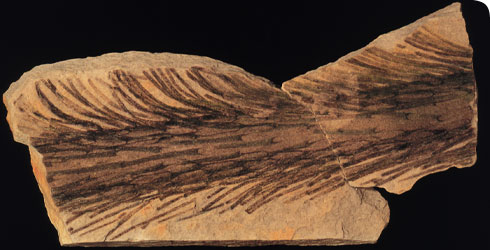Evolution
Research in the Natural History Museum focuses on working out the evolutionary history of Lycopodium clavatum and its relatives in the family Lycopodiaceae.
Lycopodiaceae is an ancient family that seems to have changed little in over 380 million years. In fact, its members strongly resemble some of the earliest plants to live on land.
We are interested in finding out how this small but tenacious family of ‘living fossils’ survived and adapted. Our research using molecular phylogenetics and the fossil record addresses the general questions of when and how modern species diversity evolved.
Also, we are investigating one of the distinctive ecological strategies of Lycopodiaceae. More than 80% of living species are epiphytes. That means they live on other plants, in particular trees, although unlike parasites they do not derive sustenance from their host. We question whether the evolution of epiphytism is very ancient or whether in geological terms it is a more recent phenomenon, as in flowering plants such as bromeliads and orchids.
We found:
- Although the family is ancient (about 380 million years old), most living species diversity originated much more recently. For example, the high diversity living subgeneric groups diversified during the latter part of the Cenozoic Era (i.e., more recently than about 40 million years).
- Epiphytism evolved comparatively recently in geological terms, with most species diversity post dating the latter part of the Cretaceous Period (i.e., more recently than about 80 million years). It seems likely that epiphytism in Lycopodiaceae evolved alongside similar strategies in orchids and bromeliads in tropical forests dominated by flowering plant trees.
- Lycopodium clavatum split from its closest living relative Lycopodium vestitum about 15 ± 8 million years ago.
We conclude that although conservative in its morphology, this ancient family is highly dynamic in terms of species turnover. Also, species diversity increased dramatically through exploitation of the novel epiphytic strategy, which was acquired during the Late Mesozoic.
